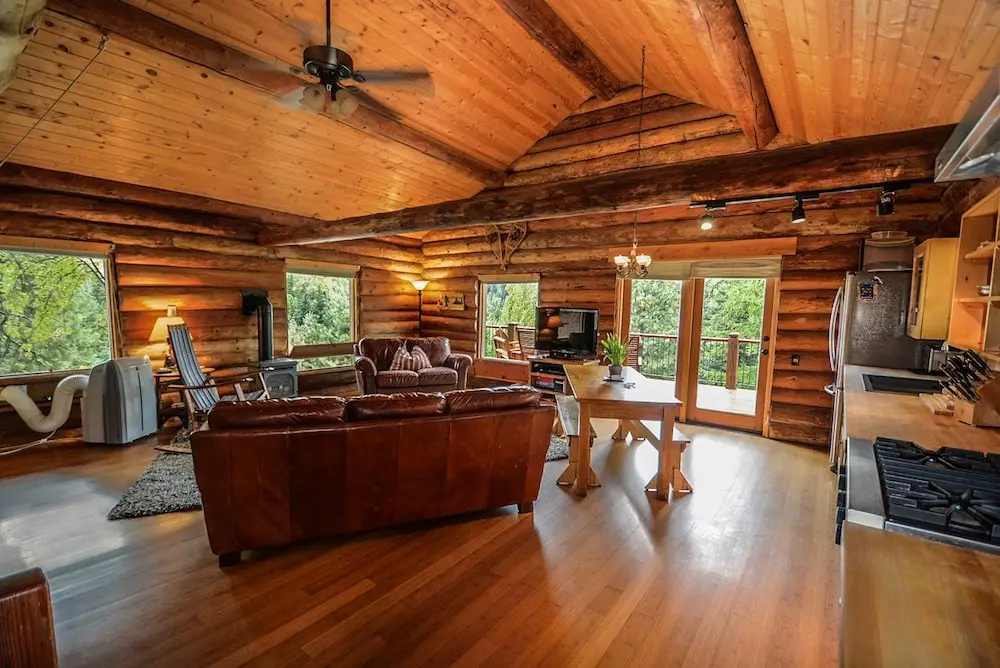
Log homes are beautiful structures that are some homeowners’ dream house. But with the dream of owning this house comes the nightmare of finding home insurance willing to cover you. Many insurance companies will outright refuse to grant you a policy on your log or timber homes.
This is due to the high risk of most log homes. Often, log homes are built in rural areas far away from fire stations and surrounded by woods. This factor puts them at greater risk of fire damage and turns most homeowners insurance companies away from the idea of covering your house.

That doesn’t mean you’re out of luck – there are some companies who will insure you and some who even specialize in log cabins. With these companies comes some separate issues in the insurance process that you will need to be aware of. With the proper research and understanding of your housing situation, you can find the right insurance policy for your log home.
The construction process
A big part of whether your home will be insured or not comes down to the construction process. Log homes are typically more costly to build than the traditional home. This is due to the materials required as well as the seclusive construction site. Often times the construction crew that built the home is a specialized company that focuses on log homes.
Insurance companies typically won’t insure the property for its full value. In this case, you will need to request a policy that is higher than the appraised value of your home to fully cover the cost of your home.
Some log homes are built using raw lumber and can be fire resistant. This will again drive up the cost of the home and most importantly, the cost to rebuild. The cost to rebuild is a big factor in the decision-making process for insurance companies. If the company sees that a home would cost a great amount to repair or rebuild, they will up their premiums or even refuse to insure the home at all.
Be wary of fire damage
Fires are one of the biggest risks to a log home and one of the greatest turn aways for insurance companies. Typically, a log home is built in a secluded area surrounded by the trees used to build the home. These areas typically have a volunteer fire department or no fire department at all within practical distance making them much greater risks for fire damage.
The fact that the home is built out of a more flammable material than the traditional home and is further away from possible fire departments means you might be hard-pressed finding an insurance company willing to take a risk on your home.
This does not mean that no one will insure your log home is you are out in the rural woods. Again, some insurance companies have capitalized on the lack of log home insurance. You may need to be prepared to pay higher premiums to cover the possible cost of repairs.
Other insurance risks
Along with heightened fire risk, your log home is at greater risk of insect damage. Because it’s built mainly out of wood, termites could occupy your home and leave you in dire need of repairs. Due to the greater problem of pest infestation in log homes, insurance companies may tend to back off again from insuring your home.
When you do find a homeowners insurance company who is willing to cover your home, you may need to add an insect and pest control clause into your insurance policy. Most insurance policies do not cover infestations as that could be seen as an issue the homeowner should handle. For log homes, since your house is at greater risk of pests, it might be smart to add this to your policy.
Where your house is built can lead to other natural disaster risks. If your house is built on a floodplain or in a tornado prone area, your insurance premiums could go up. Check the statistics of the area where your log home is built to know more about what risks you may meet.
Find the right policy for your home
Just because some insurance companies will not consider covering log homes does not mean you are stranded without insurance. There are plenty of companies out there that will cover log homes and many who specialize in them.
Do your research and find the right insurance policy for your home. Knowing what options are out there is important. It could be tempting to go with the first company that offers log home insurance, but if you keep looking there are plenty more that are willing to cover your home.
Know the risks and factors involved in your own log home. Knowing the appraised value of your home, what risks the area it was built is prone to, and how far away you are from fire rescue will come in handy in the insurance hunting process. Compile all these factors and find the best insurance policy for you!

